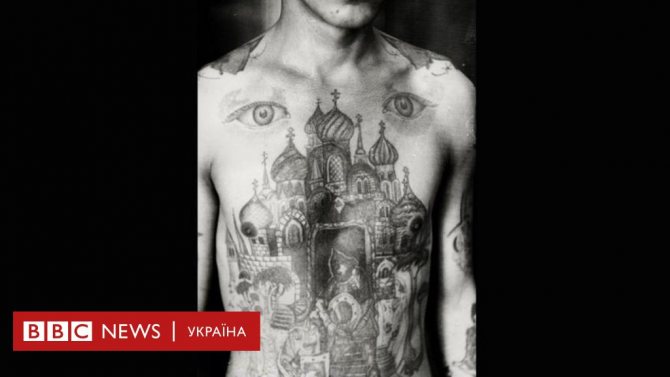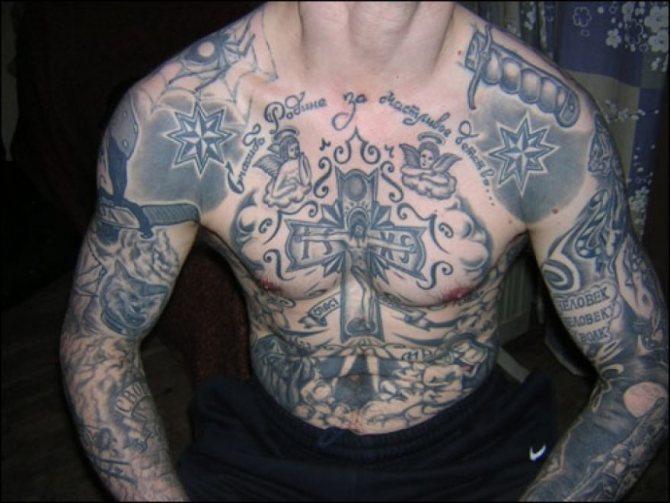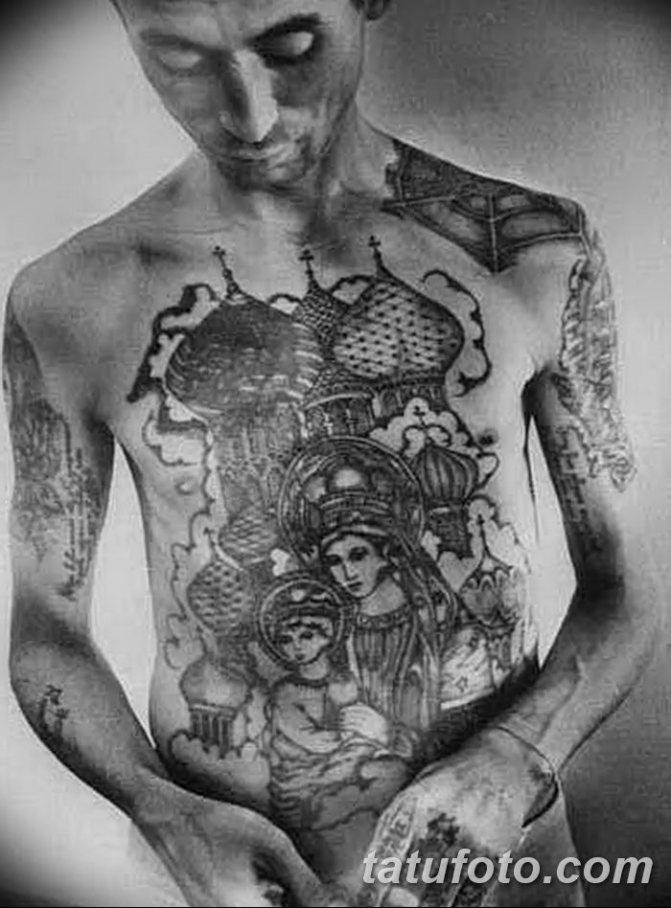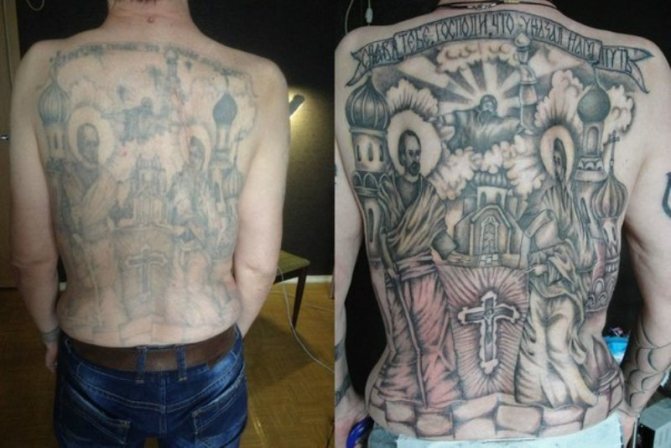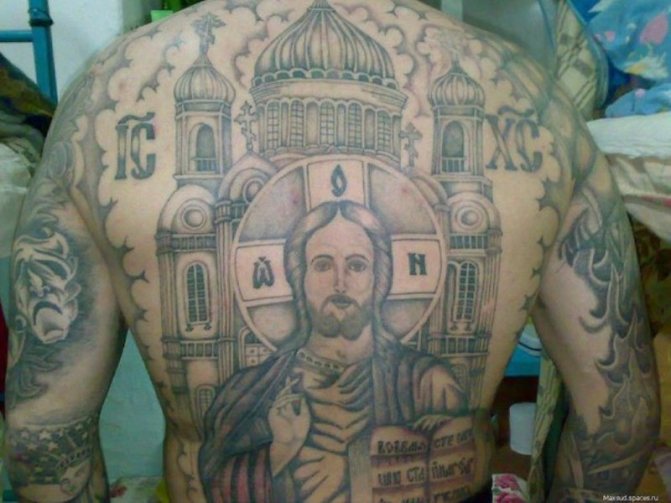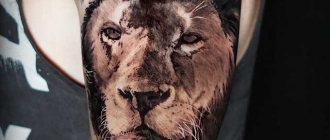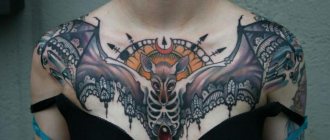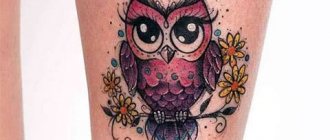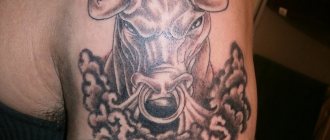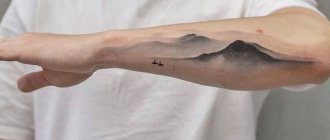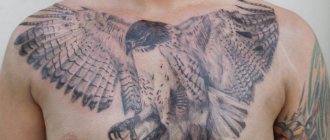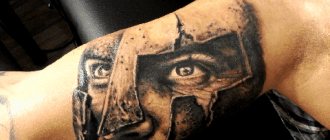One of the oldest illustrations are domes, it is very common and popular among a large number of people who are associated with crime. However, along with ordinary tattoos, there are also criminal images. It is worth noting that the latter are strikingly different from the former and they are applied not for the sake of decoration for the body, and to determine the identity of the person. With the help of such tattoos can learn some information about its owner, this is a special language that only criminals understand. After all, by means of this they can "read" the person who is in front of them. All this happens because criminal tattoos have a certain meaning and designation, which do not change, but on the contrary are oriented to understand what kind of person and for what he is serving his sentence or has already served his sentence. It is worth noting that the meaning of the dome tattoo is directly related to the criminal world. These are criminals who have served their time in prison or are still there.
Look at the sketches for a tattoo with a dome
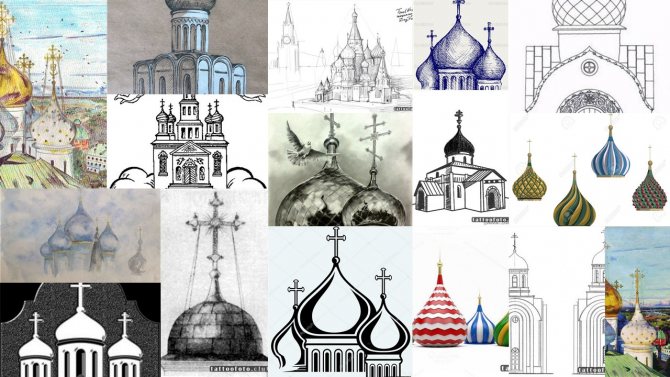
History of origin
The first images of churches began to make the prisoners of the Solovetsky camp of special purpose in 1920-1922. There was a coup in the country, socialists were in power, along with the real criminals in the camps were sent and all unwanted ruling party.


The new government did not recognize religion and began actively destroying churches and exiling priests. There were many church ministers in Solovki; they were forbidden to perform rituals and prayers and to wear any church paraphernalia, including body crosses.
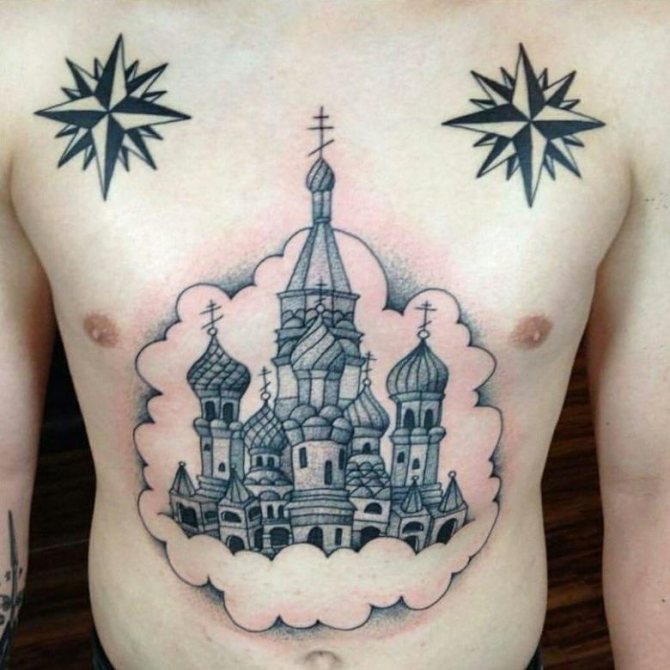

Everything that had anything to do with Orthodoxy was taken away and destroyed. Then the clergy came up with the idea of stuffing domes on the body - because the skin could not be taken away, as well as the faith.


The priests were supported by other prisoners, all of whom were Orthodox Christians. The image of churches became so popular that it is still associated with places not so distant today.
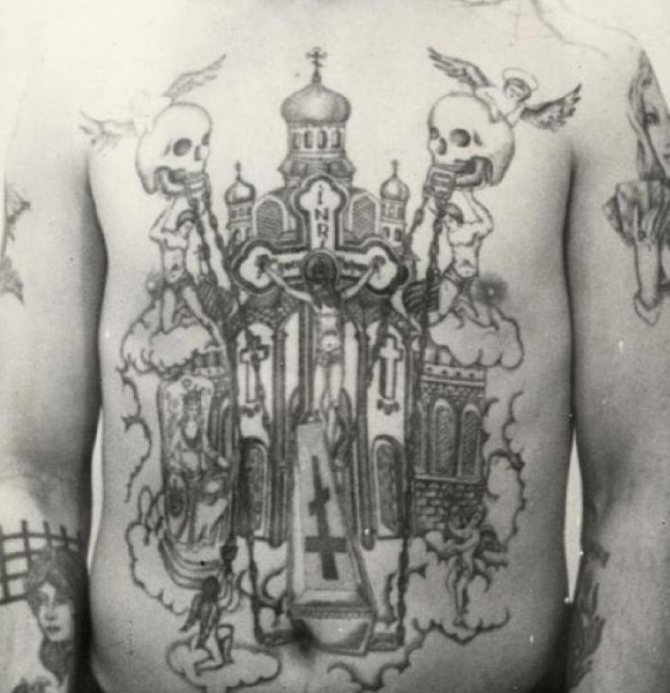

Meaning at the moment
In modern times, the tattoo "Domes" has not changed its meaning in the criminal world and has not lost. Yes, and the nature of it has become more formal. There are no more such questions and picking on this prison tattoo. But still it is not worth filling up such a picture on your own, because most of the detainees are people of principle.
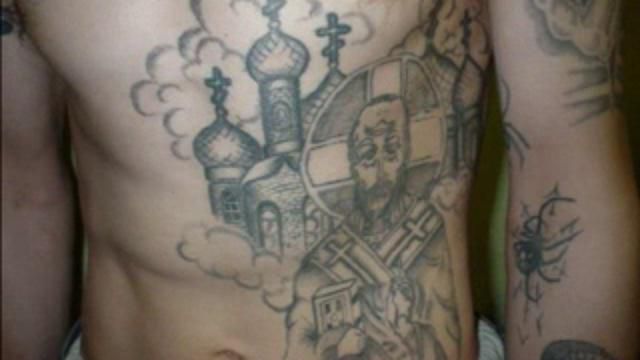

It is also not worth doing such a tattoo if you have nothing to do with the criminal world. There was a stereotype that this is exclusively a prison tattoo, although in general it is. Such a tattoo can cause some misunderstandings about the identity of its owner. This can happen no matter with what intention it was tattooed. For example, in Buddhism, the symbol of the dome is absolutely not associated with prison concepts. In this case, the tattoo carries the idea of spiritual protection. However, in our country, the Dome tattoo refers exclusively to the prison.
Despite the fact that over the decades some of the prison tattoos have changed both in appearance and in designation, they still carry a certain meaning. In each of them lies some history of the prisoner's criminal journey.
Meaning
The religious meaning of the tattoo has long since been lost, but in the prison world, you can't just put something on it. Nakolki is a special language, it will tell everything about their owner: how many trips, article, status, term, etc.
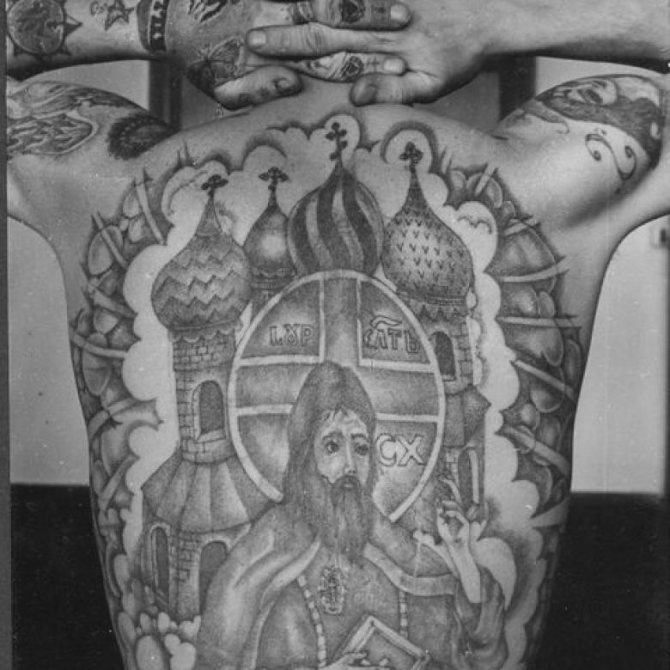

The meaning of the tattoo with domes depends on gender, for women the tattoo with the church is made by convicts for theft or robbery.
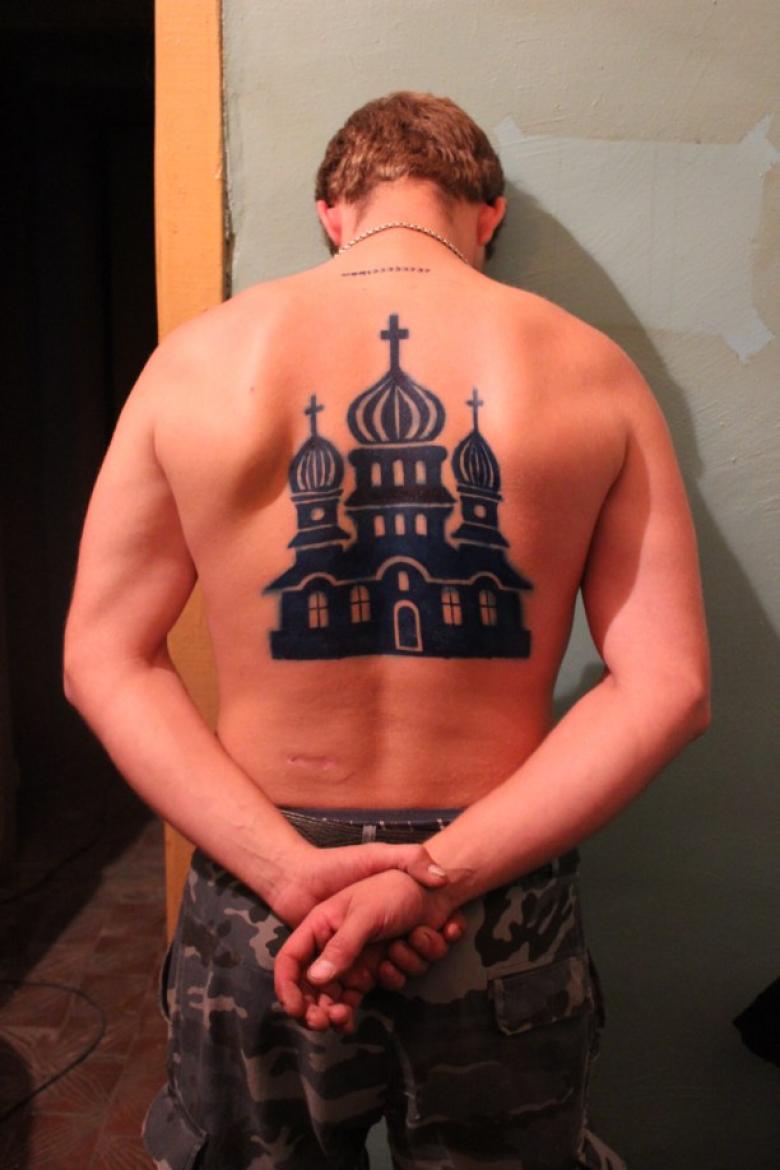

For men, such a tattoo symbolizes that the prison has become instead of a home. Also by the details you can learn all about his criminal record:
- The number of domes - the number of years spent in prison.
- Windows - also symbolize the years spent behind bars.
- Color of the domes - darkened ones indicate the owner was in solitary confinement.
- Crosses - means time served "from bell to bell", if the crosses are missing, the thief may also be "charged".


Once the offender was back in prison, additional domes, crosses, etc. might be added to the tattoo. Some convicts tattoo for superstitious purposes, repenting of what they have done, they want to placate God with an image of his home.


Why do convicts make tattoos with religious symbols when all religions consider it a sin? Three main reasons can be identified:
- The offender thus appeals to a higher power, talking about his difficult fate.
- The images on the body are a kind of document of the jailed person, his involvement in the community of thieves.
- Nakolki with Orthodox themes are a talisman or a pledge of good luck in future years.
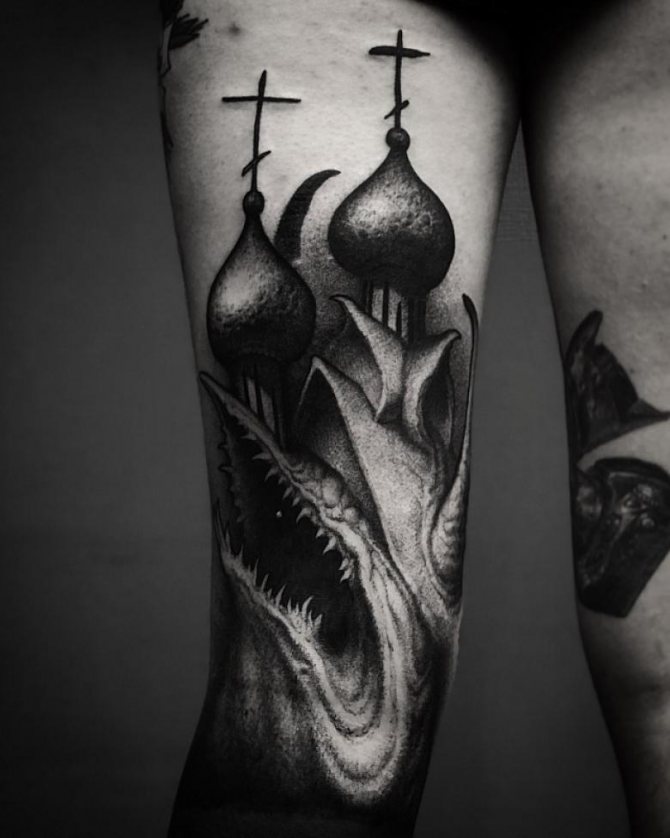

What is the meaning of the kupala tattoo?
Such images occupy a rather important and significant role in the criminal world. After all, there are certain laws for criminals, which are not prescribed anywhere and exist only in words, it is a kind of unwritten rules and concepts, according to these laws criminals live. In the hierarchy of the criminal world the traditions and their observance are very important, it is necessary to notice that the thieves' tattoos are one of the most known and important in the criminal society. After all, a thief in prison acquires certain privileges, and he must adhere to the code created by thieves. Otherwise, this person does not deserve the status of a thief. According to the rules and laws of the world within the confines of a prison cell, tattoos are not applied to a prisoner's body for nothing without a good reason. It is worth noting that in certain circles, these tattoos are very easy and well read, that is, these images provide the person who knows this special language with the information they need. The domes of churches and cathedrals are applied only to thieves in law and to those who are serving a sentence for more than the first time. However, such an impressive illustration must first be earned and proven that this person is worthy of the title of thief.
Where does one get a tattoo?
Most often, tattoos with domes are applied to the chest or back area, this is where you can place the largest picture with all the details. It is also believed that the area of the chest is chosen by the prisoners because of its proximity to the heart, this man stresses that he repented and embarked on the righteous path.
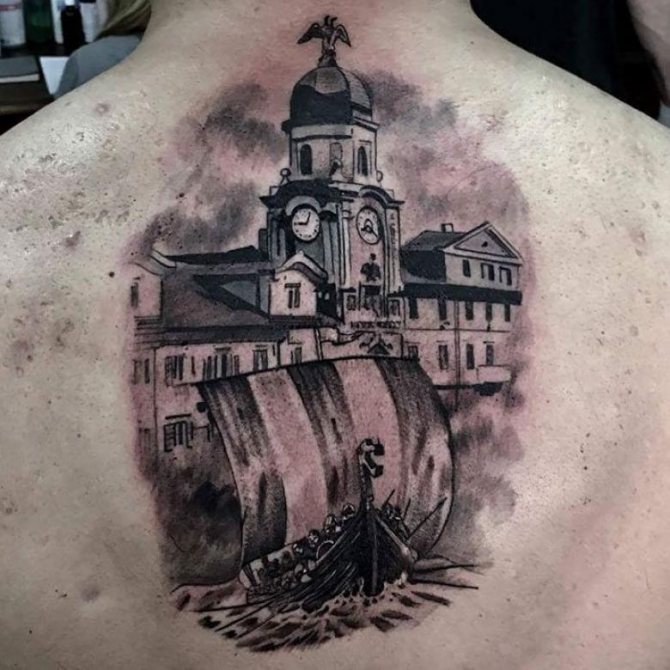

Very rarely the drawing is applied to the wrist and this indicates the protest of the prisoner, such a church is complemented by shackles.
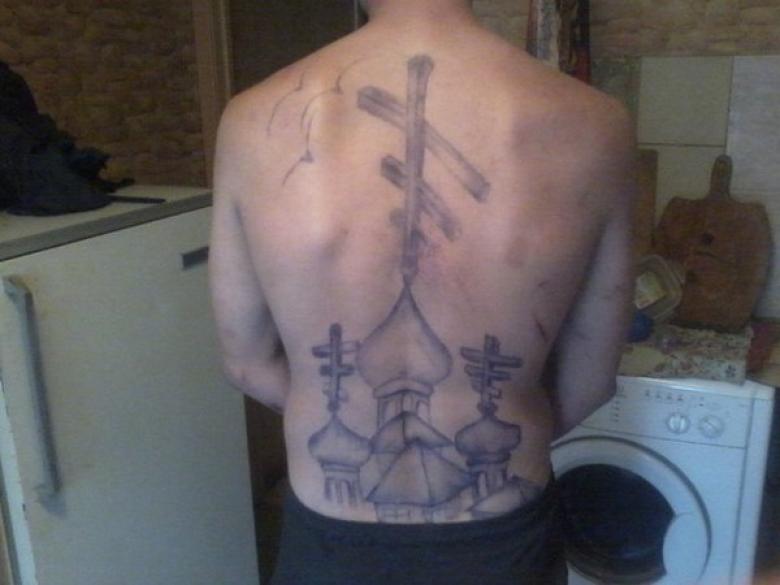

If the area of the chest and back is full, the cathedral is stamped on the legs: thighs or shins. Some hidden meaning of such a position does not carry.
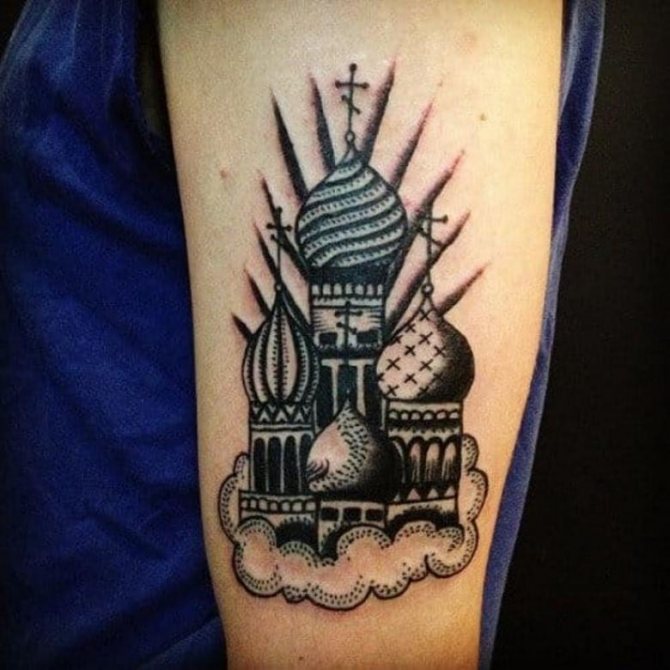

Dome tattoo: meaning
Although church tattoos carry their own aesthetics and convey the spirit of the Orthodox Motherland, in Russian society the main part of their bearers - former convicts - is disapproved of. Tattoo of the domes expresses the inherent meaning of prison culture.


For this reason, for purely aesthetic reasons, people without a criminal record are not recommended to get a temple tattoo. In order to avoid problems and misunderstanding, as an encroachment and unreasonable assignment of themselves to the culture of the zone.


Departing from the prison world, a military paratrooper can also apply with a desire to get a tattoo with a dome. As the dome of the parachute in the opened form is the distinctive sign of the paratroopers, which shows bravery. Within this meaning, the number of domes already speaks of the division in which the service was performed.
Domes in modern society
The dashing 90s are long gone, and convicts and criminals have virtually no power over ordinary people. In theory, anyone can put domes on their body, but the stereotype is firmly planted in their heads: be prepared to be associated with the prisoner who came out of the zone. In addition, real cons disapprove of the use of their symbols for nothing. Most likely, the tattoo will bring more problems than benefits.


Features and meaning of the dome tattoo
One of the most important features of this image is that the number of domes on a cathedral or church can be different and it means that this is not the first time a person is behind bars for the same reason. That is, the amount of time served is displayed on the body in the form of domes. As a rule, such images are applied in such a way that a person cannot get rid of them. Usually these tattoos are not removed because the person himself does not want to do so, because he considers his way of life to be correct and quite fair. Also a feature of these tattoos may be that they are applied as the terms in the colony or places of incarceration increase. These images have special qualities and the larger and more massive the image, the more authority that person has in prison and in freedom.
See photos of dome tattoos
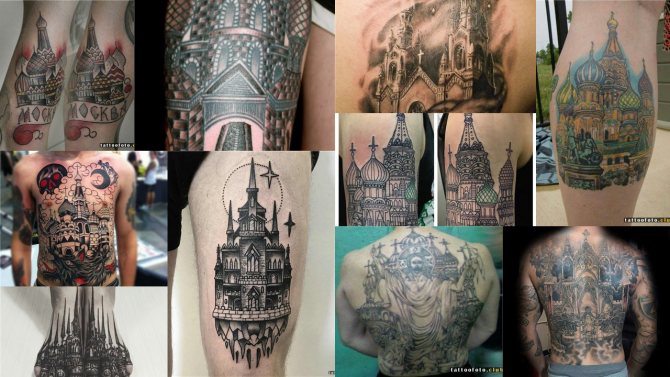

The way of tattooing in the zone
Naturally, no professional tattoo rooms and apparatuses in places of detention. Tattoos were stabbed with improvised materials. All prison tattoos are monochromatic: blue or black, the tattoo ink was made from ink, soot, coal and burnt rubber. It is still forbidden to carry helium pens in pre-trial detention facilities.


There were no special needles, it was almost impossible to get a sewing or medical needle from a syringe, and sharpened staples from books or notebooks were used. To work, the ringmaker tied the needle with thread to a match and used it to apply dye. Later it was invented to use electric razor with a needle.To become a master, it was not enough just to be good at drawing, a person had to know what, to whom and for what can be applied. A tattooist could be severely punished for his mistake. Drawings were usually applied to the body without a sketch.
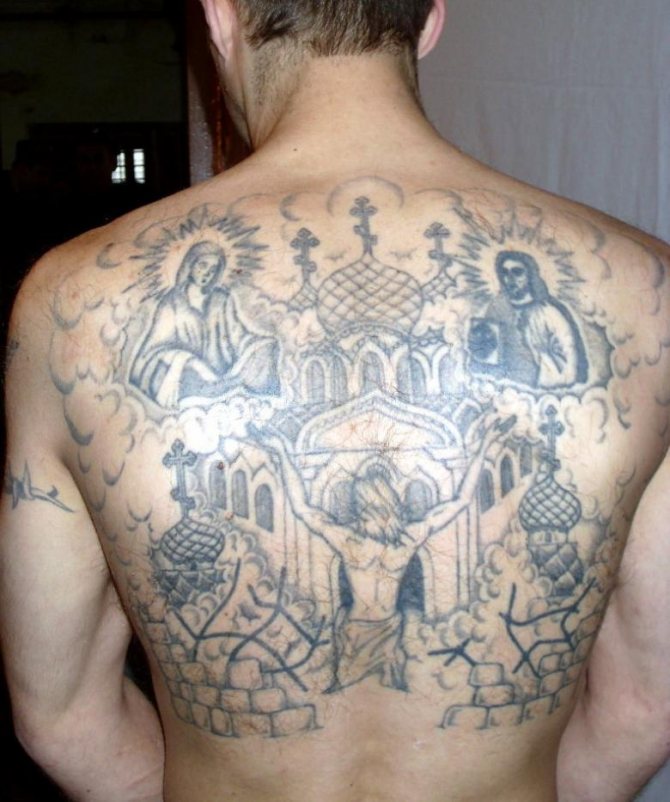

The lack of basic sanitary conditions led to negative consequences: suppuration, gangrene, amputation, infection with hepatitis, AIDS. Being aware of such consequences, convicts were and are still doing tattoos.
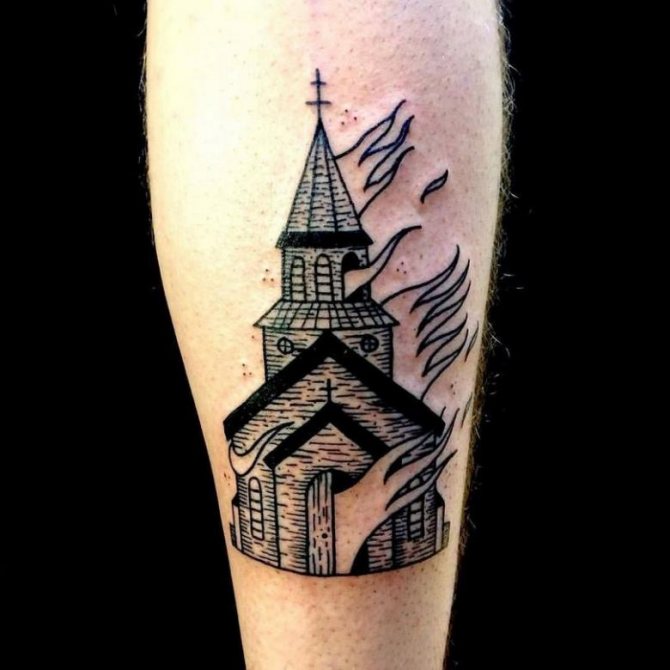

More than a century has passed since the prison tattoo with church domes appeared, but its popularity among criminals remains today. And it's not just a trivial drawing - it's the whole story of a person's life, his crime and punishment.
Where did religious tattoos come from?
Criminals have formed their own unique society with its own laws. A similar insularity from the secular world and a special set of laws are characteristic of those who have given their lives to religion. The only difference is that some people who transgressed the law were rejected by society, while others walked away from it themselves. This "kinship" could well be the reason for the appearance of religious images as attributes of the life of thieves.
Arrests of priests in the revolutionary and post-revolutionary times could also play their role in the development of thieves' symbols. In those years, respect for the clergy was a mandatory element of education, and when thieves found themselves behind the same bars, they often accepted them as brothers in misfortune. Priests and criminals, who were persecuted by the authorities as equals, managed to find a common language with each other because all are equal before God. The cult servants buried the dead and performed other religious rituals even while in confinement.
It is also possible that in a low-literate environment they helped to form a special language of symbols which made it easier to recognize one's own among strangers. This hypothesis is confirmed by the fact that no other country in the thieving world has such an abundance of religious images.
